Quecreek Mine Rescue Site and Visitor's Center
Introduction
Text-to-speech Audio
Images
Bringing the miners up from the mine
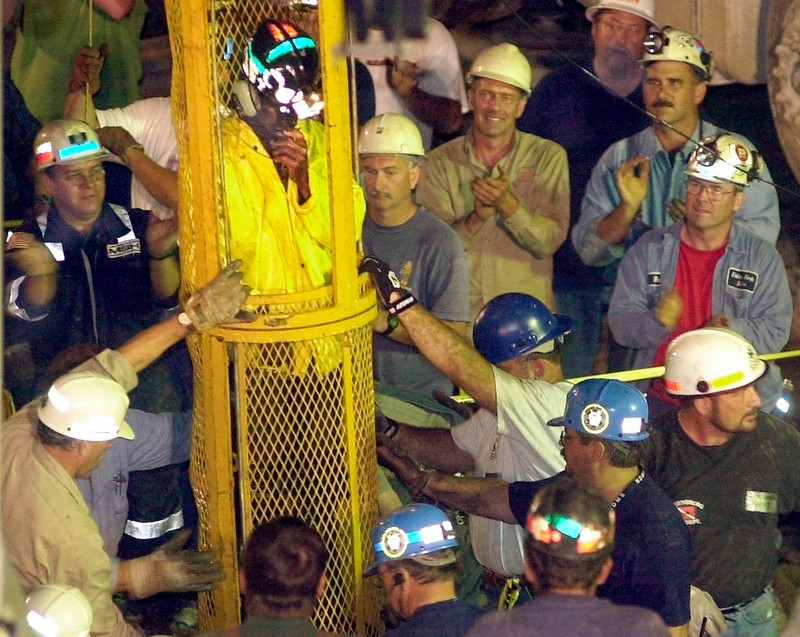
Rescue shaft number 2 after the first broke
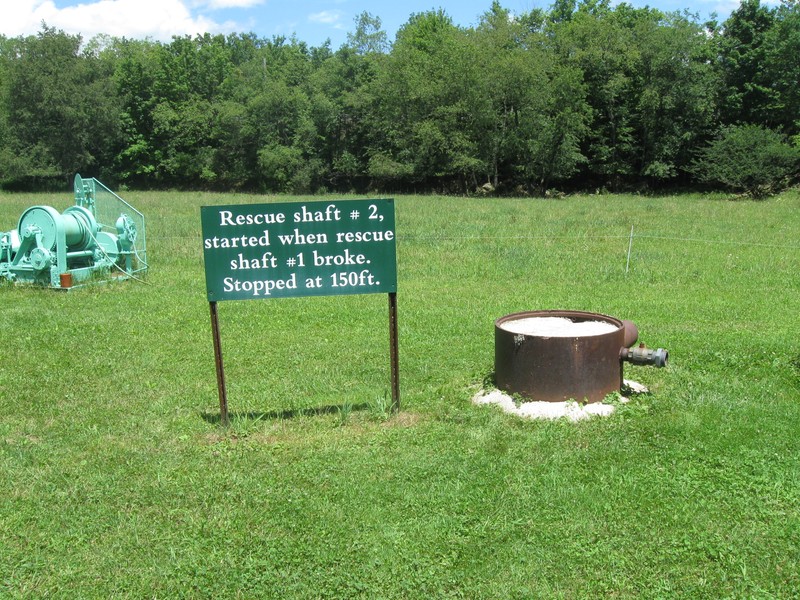
The rescue shaft which brought up the nine miners from 240 feet below
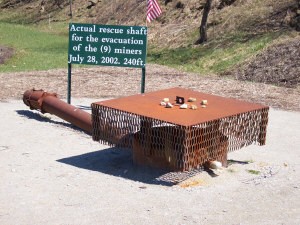
Rescuers working to bring the miners to the surface
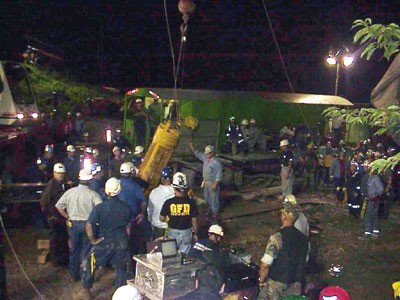
the actual rescue capsule used to bring the miners up now located in the visitor's center.
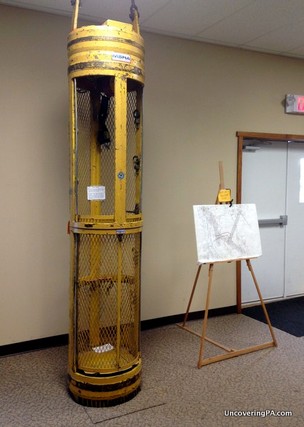
Backstory and Context
Text-to-speech Audio
The first attempt to help the miners was to slow the flooding by pumping pout water and to drill a hole down to the trapped miners for air. When the drill arrived from Clarksburg it was put to use at once. The drill got to about 105 feet when it broke. It was brought back up but a piece was stuck in the hole. After 18 hours drilling began again with a 26 inch drill bit. A second hole had been started as a backup as well. The drill bit for the second hole broke and was in progress of being fixed when hole number one broke into the mine.
After the drill broke into the mine air tests were taken to see if airlock was needed but they were equal and it would not be needed. Communication was then sent down to the mine. All nine miners were in good condition except for one with chest pains. The 8½-foot high steel mesh escape capsule was then lowered to the miners with supplies. The miner with chest pains was the first to arrive on the surface at around 1am on July 28th. The rest of the miners would come up with the heaviest first and the lightest being last. At around 2:45am all miners were safely brought to the surface.
The site where the drilling
rescue occurred is now a memorial park open to visitors and includes all the capped shafts drilled to save the miners, a 7-foot bronze statue of a miner, and the Monument for life Memorial. The Visitor's Center houses numerous artifacts from the rescue to include the miner's clothes, the rescue capsule used to bring the miners to the surface, and an NBC television van used to cover the rescue.
Sources
Cheney, Jim. "Discovering Hope at Somerset County's Quecreek Mine Rescue Site." Uncovering PA. July 25, 2015. Accessed December 13, 2106. http://uncoveringpa.com/quecreek-mine-rescue-site
Various Reporters. "'All Nine Alive!' The Story of the Quecreek Mine Rescue." Pittsburgh Post-Gazette. August 2, 2002. Accessed December 13, 2016. http://old.post-gazette.com/localnews/20020804all9indexp9.asp
